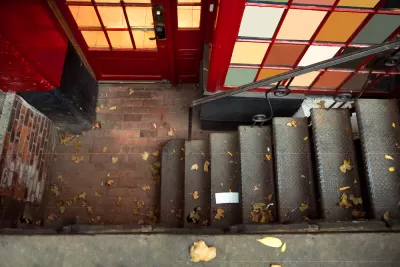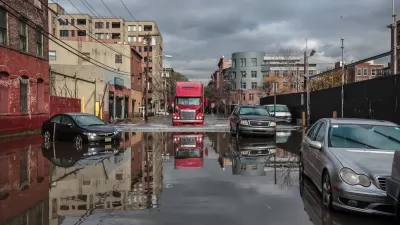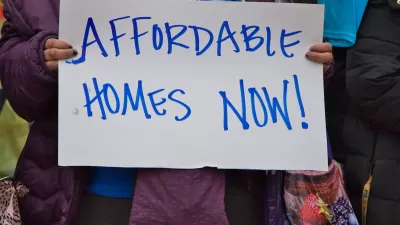Managers of affordable housing at the deadly northern end of Ida's path review what worked, what didn't, and what we might need to abandon altogether.

When the remnants of Hurricane Ida struck the Northeast in early September, the region was inundated by devastating flash floods. Across four states, the storm killed more than 40 people, caused up to $24 billion in property damage, and knocked out power to 150,000 homes. New Jersey and New York City were hit particularly hard—30 New Jersey residents drowned in their homes and vehicles, and in NYC, 13 residents died, most drowning in their basement apartments.
The storm exceeded expectations for a 500- to 1,000-year rainfall event, according to researchers at Cornell’s Northeast Region Climate Center. The event’s improbability helps to explain why the region’s infrastructure was so ill-prepared for the rapid influx of water. But extreme storms like Ida will not be so rare in the future, and our cities, along with their affordable housing stock, will need to adapt.
A New York City panel on climate change forecasts that, by 2050, what is now classified as a “100-year flood” will occur three times more often in New York City. Sea levels will rise by 30 inches, and there will be up to five days each year with more than 2 inches of precipitation. The panel also expects the number of days that top 90 degrees Fahrenheit in the city to triple by 2050, posing public health risks from extreme heat.
The climate crisis presents an existential threat the world over, and it’s bumping up against the affordable housing crisis in expensive metropolitan areas like New York City. The city’s population is projected to grow from 8.8 million residents to 9.2 million by 2050. That growth is expected to concentrate in the Bronx and Brooklyn, two boroughs that saw massive flooding during Ida.
As demand for housing rises, preventing climate-related disasters from eroding the already-scarce supply of affordable housing will be critical, says Laurie Schoeman, national director of resilience and disaster recovery at Enterprise Community Partners (Enterprise), a nonprofit that works to address the housing affordability crisis through policy, programming, and capital investment.
“A lot of existing affordable housing is exposed to extreme climate risk, in flood zones, in areas that are apt to burn, or in drought zones,” says Schoeman. “These units are in the direct path of climate change and they’re facing extinction.”
So, how can we protect our existing affordable housing stock from more frequent and extreme weather events, and build new housing that can withstand the effects of a warming climate? And what lessons can Ida offer to affordable housing managers and owners whose properties are at risk?
A Shifting Picture of Risk
As storms like Ida become more frequent, building owners and managers may be forced to ...
FULL STORY: After Ida, How Can Affordable Housing Withstand Climate Impacts?

Planetizen Federal Action Tracker
A weekly monitor of how Trump’s orders and actions are impacting planners and planning in America.

San Francisco's School District Spent $105M To Build Affordable Housing for Teachers — And That's Just the Beginning
SFUSD joins a growing list of school districts using their land holdings to address housing affordability challenges faced by their own employees.

The Tiny, Adorable $7,000 Car Turning Japan Onto EVs
The single seat Mibot charges from a regular plug as quickly as an iPad, and is about half the price of an average EV.

Seattle's Plan for Adopting Driverless Cars
Equity, safety, accessibility and affordability are front of mind as the city prepares for robotaxis and other autonomous vehicles.

As Trump Phases Out FEMA, Is It Time to Flee the Floodplains?
With less federal funding available for disaster relief efforts, the need to relocate at-risk communities is more urgent than ever.

With Protected Lanes, 460% More People Commute by Bike
For those needing more ammo, more data proving what we already knew is here.
Urban Design for Planners 1: Software Tools
This six-course series explores essential urban design concepts using open source software and equips planners with the tools they need to participate fully in the urban design process.
Planning for Universal Design
Learn the tools for implementing Universal Design in planning regulations.
Smith Gee Studio
City of Charlotte
City of Camden Redevelopment Agency
City of Astoria
Transportation Research & Education Center (TREC) at Portland State University
US High Speed Rail Association
City of Camden Redevelopment Agency
Municipality of Princeton (NJ)





























